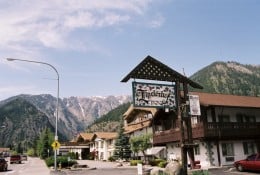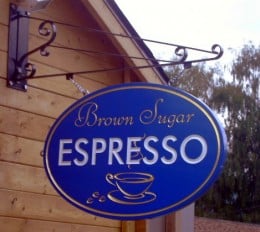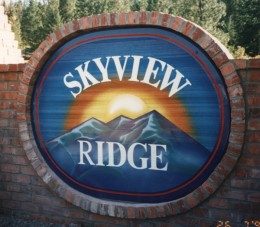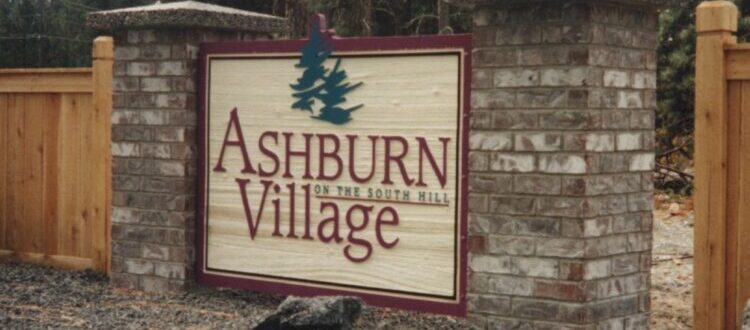No one knows exactly when the first caveman/woman carved their initials in a tree as a territorial marker, but we do know that wooden signage, along with cave drawings and papyrus and piles of stones, carved wood signs are one of the oldest types of guide markers.
Of course, they look a little better now than they did back then, we think. Of course, being what they were – wood – they didn’t last quite as long as the cave drawings or the clay tablets that the Mesopotamians used. Or the bronze signs that came later during the Greek and Roman Empire eras. But we can assume that carved markers have been used for millennia because of the availability of wood and the tools that could carve them, such as stone or bronze.
At any rate, some of the older existing signs in the West (including Europe and the United States) are carved, and along with some very artistic painting, they are still among the most beautiful of all displays still made, though most businesses in the modern era opt for cheaper looking and costing signposts.
Wooden Carved Signs – One of the Oldest in Existence, Still One of the Most Beautiful Styles Available
Today, one of the most common places to see carved carved wood signs is around housing development entry points, especially the more exclusive ones. They can be router cut to a specific shape using CNC (Computer Numerical Control) routers or just a jigsaw if that’s what a shop has.
 They are now , more often than not, engraved with router bits on these CNC routers, but a few hand carvers still exist, although the cost for one would be akin to purchasing a very expensive original painting, as that is indeed what you’re buying if you have enough money to do so.
They are now , more often than not, engraved with router bits on these CNC routers, but a few hand carvers still exist, although the cost for one would be akin to purchasing a very expensive original painting, as that is indeed what you’re buying if you have enough money to do so.
Another area where they are used is in Bavarian-style villages such as Leavenworth, WA. They lend a nostalgic feel to these towns which appeals to the tourist in most of us.
Some business elect to use them for their main identification sign, although this is not as common due to the higher cost per square foot than some other options available. However, we’ve created them for many businesses from real estate office to law firms to grocery stores. They are never out of date and certainly always in style.
Most You’ve Seen May Not Be Carved at All
 There are three basic materials used now to make wooden carved signs, one of which is, surprisingly, not wood. The most popular woods are redwood and western red cedar, both of which have become increasingly expensive due to the finite supply of redwood in particular. Redwood is the costlier of the two, as it grows in a limited region of Northern California. Western Red Cedar, though, grows from Northern California up into Canada and Alaska, so it is more readily available now than Redwood is.
There are three basic materials used now to make wooden carved signs, one of which is, surprisingly, not wood. The most popular woods are redwood and western red cedar, both of which have become increasingly expensive due to the finite supply of redwood in particular. Redwood is the costlier of the two, as it grows in a limited region of Northern California. Western Red Cedar, though, grows from Northern California up into Canada and Alaska, so it is more readily available now than Redwood is.
The third material is, as I stated above, not wood. So, I guess, technically, we can’t call it a wood item, but if you look at it, compared to Redwood or Cedar, when it’s painted, you can’t really tell the difference, at least not in the short term. In the longer term, you can tell the difference.
Wood will expand and contract at about 10 times the rate of High-density Urethane (hereafter referred to as HDU). Over time, they will shed paint at a much faster rate than will the HDU signs. Which is why, when potential clients call us and ask for sandblasted or carved signage, we will generally steer them in the direction of HDU.
The one exception to this is if the actual wood grain will be showing, like this signge to the right. Obviously, the one lacking feature of HDU is that it has any wood to carve in it. However, if paint is the main feature, then HDU can be used and no one will be the wiser except the person who made the purchase as it will hold paint way longer than the carved one would have.
Carved Signs vs. HDU – How We Make Displays with a Wood Grain Using HDU – The Sandblasting Process and a Special Tool
 Sandblasted wood displays are also a very popular type of sign, and while these are not technically made from wood, or HDU, they are still very attractive, and often feature raised letters rising from a sandblasted wood-grained background.
Sandblasted wood displays are also a very popular type of sign, and while these are not technically made from wood, or HDU, they are still very attractive, and often feature raised letters rising from a sandblasted wood-grained background.
So, if you use HDU, it’s obvious you won’t have a wood grain sign, right? Actually, again, only if the real wood grain is part of the look of the sign would that be true. We’ve been using frames with wires stretched horizontally above the HDU blank for nearly 20 years to create a faux look, and only the most trained eye would be able to see the difference.
If you’re wanting to create a classic first impression with potential clients, this is one of the preeminent ways to do so. If you’re an attorney or a consultant, using them with maybe a touch of gold leaf on them will let potential clients know that you’re no run-of-the mill firm, and that your advice can be trusted more than some firm that hangs out their shingle on a plastic signage…at least subconsciously.
So, whether you elect to go with real carved wood signs or the HDU alternative, wooden displays will be around for a long time, we’re betting. Find a reputable firm to make them for your firm and you’ll always be glad you made a solid investment in your firm’s image. Check this out to see some classic layouts of these kinds.
Popular Posts:




